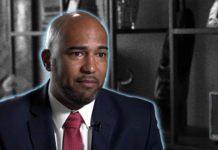Nikole Hannah Jones was in Philly recently. I was sorry I missed her speech. I really wanted to hear more about why she was convinced that the only “reform” that can accelerate Black achievement is proximity to White people.
Nikole is a brilliant writer, one of influence and affluence, but she is wrong to sell snake oil. She is even more out of touch with the realities of Black families and the strongest growth of academic achievement in the history of mankind.
NHJ also concedes at times, ignores at others the fact that despite her infatuation with integration, White folks don’t want their kids educated near Black students (they don’t want to be around Black kids’ parents either). Sure, White folks are happy to put a couple of kids with tan complexions on their website touting diversity, but you don’t need to see a school’s website to know if they promote diversity, check their Advanced Placement classrooms, the detention hall, the remedial courses, special education classrooms, and the suspension lists to know how those schools actually feel about diversity.
I would imagine many in NHJ’s audience identified as White. They probably nodded approvingly at the notion of integration as the only solution, but grimaced knowing about their recently held meetings with realtors as they pursued a home in the lily-white suburb or in the newly gentrified inner-city neighborhood.
People confuse White folks’ infatuation with Black culture with them wanting their children to grow up and learn next to Black children. White people don’t love Black culture and Black children with the same energy.
I know that White proximity is not the only way for Black children to receive a quality education. I know this from my firsthand experience attending Nidhamu Sasa, an all-Black school. I also know as an educator of Black children.
The biggest lie from Brown vs Board of Education was that the justices loved Black kids so much that they wanted to ensure Black children were well educated. In many ways, those Supreme Court justices, highlighted and elevated white supremacy in a devastating way. It’s akin to saying Abraham Lincoln loved Black people so much that he set them free. (Yes, I know some of yaw believe this to be true.)
Had the Supreme Court justices firmly believed in Black intellectualism and Black self-determination, they would not have told the world that Black children would be intellectually crippled if they were not educated around White people. In fact, I often think it is the opposite, White people become intellectually and morally dysfunctional when they are surrounded by only White people. They only have unclean, unfiltered white supremacy air to breathe, ingest, and live off of.
The justices should have said, that because of the horrific legacies of white supremacy, White children grow up thinking that they are in fact superior and they should not attend all-white schools. Instead, the burden was placed on Black communities to fix the educational system that White people constructed.
Fast forward to today. NHJ and her team champion integration as the only way. Interestingly enough, there are plenty of Black children attending majority White schools doing worse off intellectually and emotionally than they would attending an all-Black school. For years, in Philadelphia, it was well known that the School District of Philadelphia were often doing marginally better with poor Black kids than their uber-wealthy suburban districts.
In the Philadelphia Notebook, NHJ is quoted as saying she advocates for integration because “in America, separate is never equal, and never can or will be. Show me the one place where the black school in town has the same as the white school. I’ve looked at the data. It doesn’t exist. The black school will always have less. That is racial caste, It is not incidental; it is not accidental. We have a system set up to privilege white children at the expense of black children.”
This caste system also occurs inside of White schools. And, while NHJ advocates for equality, I would argue that we need to fight for equity and justice.
NHJ contends that the only time Black folks saw academic progress was during the height of the integration movement. She cites NAEP scores as the key indicator and the greatest success of Black children.
I would challenge NHJ to read James D. Anderson’s The Education of Blacks in the South, 1860–1935. Anderson shines a light on the literacy rates of Black people immediately after slavery ended when there was absolutely no stomach for integration.
The short-ranged purpose of black schooling was to provide the masses of ex-slaves with basic literacy skills plus the rudiments of citizenship training for participation in a democratic society. The long-range purpose was the intellectual and moral development of a responsible leadership class that would organize the masses and lead them to freedom and equality. Being educated and literate had an important cultural significance to Afro-Americans, and they pursued these goals in opposition to the economic and ideological interest of the planter-dominated South. Despite what seemed like overwhelming opposition to their educational campaigns, the masses of Afro-Americans persisted in becoming literate. Their 95 percent illiteracy rate in 1860 had dropped to 70 percent in 1880 and would drop to 30 percent by 1910. The former slaves were becoming literate; the process could be slowed but it would not be stopped or reversed. (p. 31)
Of all the evaluations that could be cited, the most profound and most eloquent was penned by DuBois, who praised the early missionary philanthropists as “men radical in their belief in Negro possibility.” By 1900, DuBois continued, the black colleges supported by northern missionary and black religious organizations had “trained in Greek and Latin and mathematics, 2,000 men; and these men trained fully 50,000 others in morals and manners, and they in turn taught the alphabet to nine millions of men.” The black colleges were far from perfect, concluded DuBois, but “above the sneers of critics” stood “one crushing rejoinder; in a single generation they put thirty thousand black teachers in the South” and “wiped out the illiteracy of the majority of black people of the land.” (pp. 244–245)
_________________
Scholars have pointed out that this feat had never been accomplished before in the history of mankind.
Despite my hero, Malcolm X saying, the only thing I want integrated is my coffee, I am not against integration. I am about Black self-determination – Black parents choosing the best fit for their children – if that is a mostly White school, great. If it is a full-time Black Freedom School like Sankofa or a Boys’ Latin (an all-boys school), even better. If Black parents choose (and are selected) for Science Leadership Academy, a school that works to have a racial balance that reflects the city’s, I’m game.
Despite the Supreme Court’s separate is inherently unequal, doctrine, America has never actually seen separate and equal to determine if this separation is inherently unequal. What America saw then and still sees today is an unequal separation, not the separation of cultural backgrounds, but the massive separation of generations of wealth and opportunity.
When State Senator Hughes took his legislator colleagues, who are comfortable with the massive underfunding of Black schools and the massive overfunding of already wealthy White schools, to visit two schools a Black one and a White one, this is what they saw:
Upper Dublin’s new high school, finished in 2012, features an 18-lane swimming pool with two spring-diving boards and a movable bulkhead that allows the pool to be configured for swim meets and water polo matches. The natatorium even has its own air-filtration system so the smell of chlorine doesn’t seep into the surrounding hallways or waft in the way of enjoying the tasteful mosaic that adorns the entryway to the facility.
At Overbrook — built in the 1920s — there is no pool. The comprehensive high school in West Philadelphia does have water, but it isn’t always in the right place or in the right state. Testing recently revealed six outlets with lead levels above the school district’s minimum threshold for lead content. Principal Yvette Jackson hopes to convert an abandoned room into a badly needed science lab, but can’t yet because the room has a drainage problem. The space fell into disrepair because budget cuts restricted the number of science teachers at Overbrook — and thus the number of science labs it could faithfully use.
You know it is a racist resourcing problem when I don’t need to preface who attended which public school.
While NHJ and co would say that Black children would be better off attending the very white Upper Dublin. I would say Black children would be better off with a just school funding formula.
To note, the Upper Dublin community likely doesn’t want your Black child, your Black child would likely be unsafe in Upper Dublin, and would likely have an all-Black experience inside of the lily-white Upper Dublin HS – they would not have access to the rigorous courses that are being offered. The Black students who attend these schools are often placed in all-day affinity groups that they didn’t volunteer to attend; remedial courses, special education classes, and constant trips to the disciplinarian’s office.
I would also say that what many Black folks want is a chance for their child. The types of chance educational justice can provide. When Black families do pursue integrated schools, it is to integrate the opulent wealth and opportunities that states and districts ensure White children have in their schools.
When die-hard integrationist speak about this, they aren’t saying integration is one strategy, they believe that integration is the only strategy. They note that this singular strategy often means that Black kids have to go into White neighborhoods to attend White schools, even if they can’t afford to live in those same spaces. Following this logic, the integration is the only strategy camp believe that even if Black children received the best teachers, best experiences, and highest standards that money could buy in their own neighborhoods and in their own schools, Black kids would still be compromised because they are missing a key ingredient – white proximity. As a Black father and educator and former student, I will continue to reject that.
But, why singularly focus on schools? Why not target neighborhoods, HBCUs, etc. Why not focus on the segregated White schools?
While it is implied that all White schools have better teachers, that’s often not the case at all. These same all-star teachers often can be found lamenting about how much the school is changing and longing a return to the time when their school was once great once more students of color arrive.
To her credit, The Phila Notebook says that NHJ concedes that when White parents integrate previously all-Black schools, a whiteout takes place. Black families who have been subjected to integration share a lot of painful experiences. She also notes she doesn’t argue for integration because she thinks “there is something magical about white kids making black kids smart. I advocate for integration because that’s the only way black kids get the same resources white kids get.”
There is plenty of evidence that Black kids attending White schools still won’t get the resources and support they deserve as human beings.
As a proponent of the school-to-activism pipeline, I hope that White kids who attend all-white schools don’t say, the only existing educational injustice I experienced in my PreK-12 schooling was I didn’t have more diversity. I hope that they have a clear understanding that the injustice begins with the resources. History shows that no matter how much Black folks chase White folks’ resources, the outcomes have largely remained the same.
NHJ posits “if powerful white people wanted a metropolitan school district, it will happen. So, how do you get powerful white people to want that?”
You don’t, NHJ, because they won’t.










